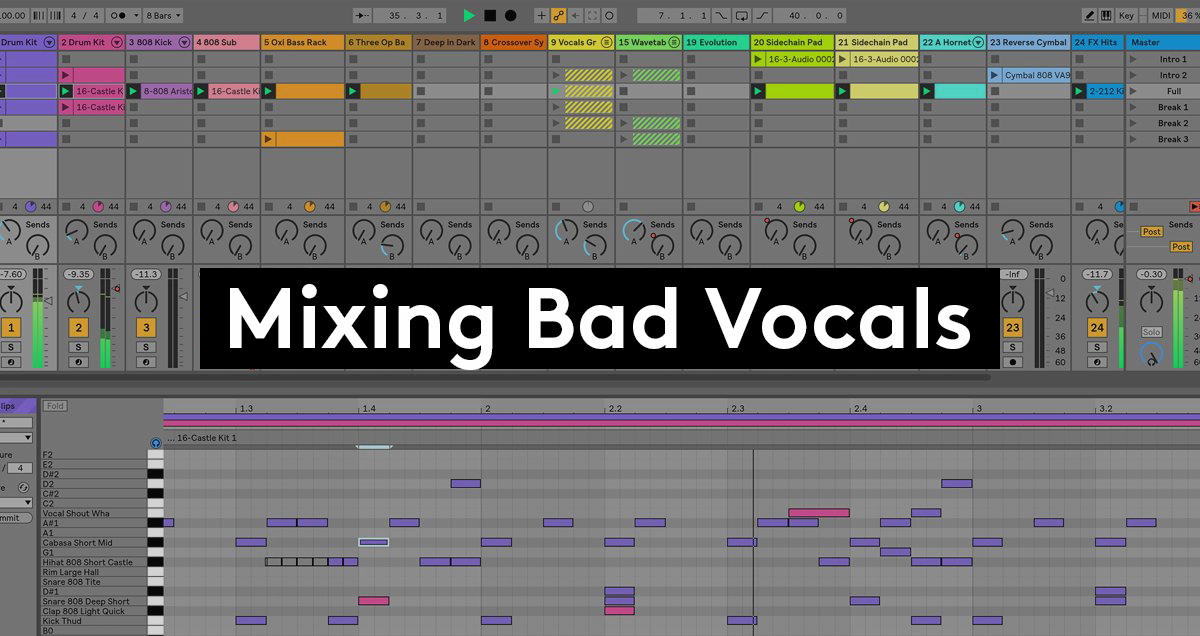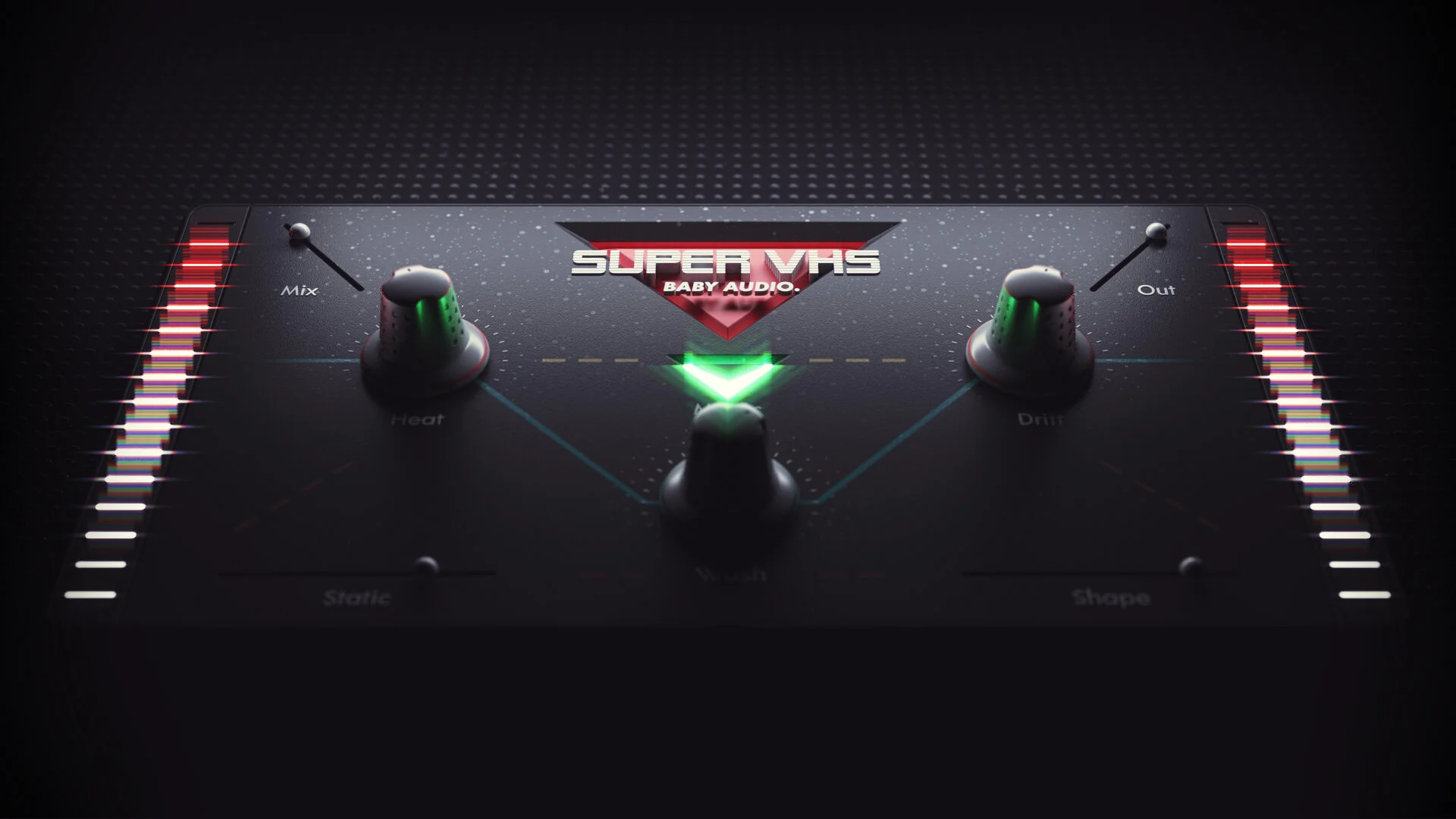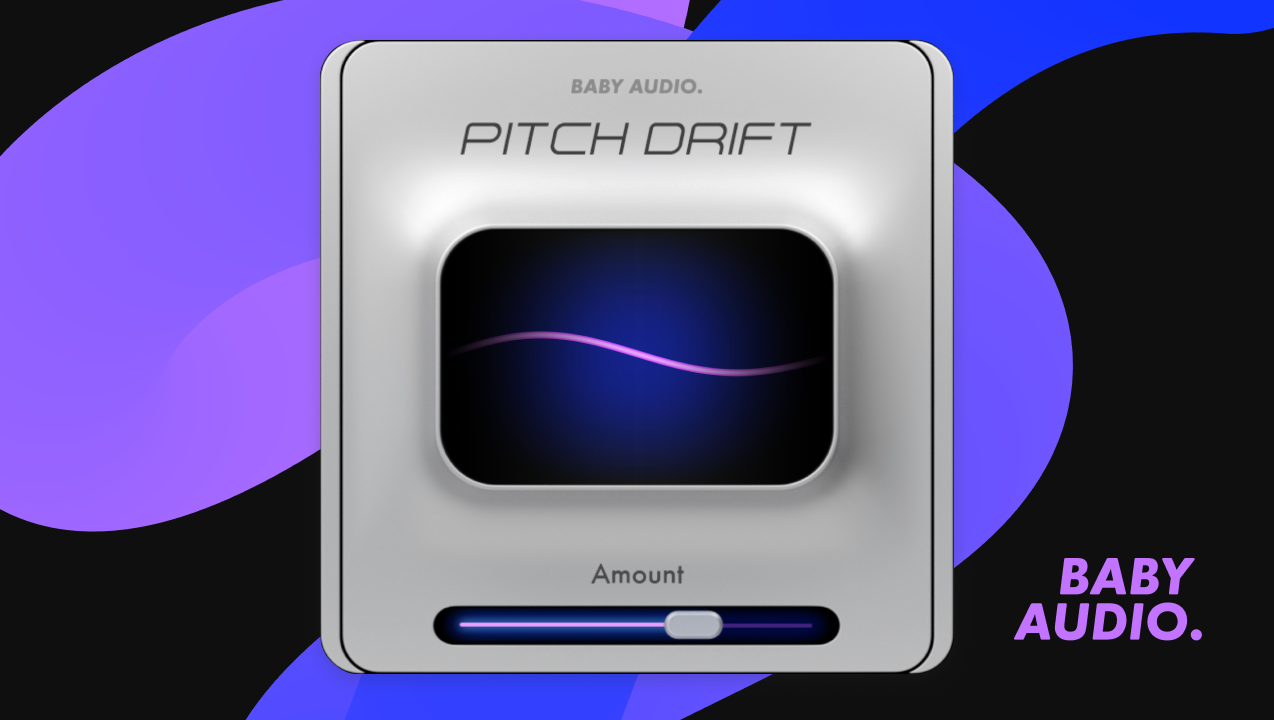5 of the best tips for mixing bad vocals

Written by: BABY Audio
Turn a bad vocal into something good
The Internet is full of guides for mixing vocal takes that already work. But where do you start when your raw material makes you question your career in music — or even your sanity? Probably not by adding a gentle EQ boost at 250 Hz!
Below, we've collected some of our favorite creative tips for mixing “bad” vocals like a pro.
1 - Use the weakness as a strength
Before we get into the technical side of things, let's start with a philosophical question: What is 'good' and what is 'bad' in the first place? It's all just perception, right? Most of our favorite tracks were made by people who weren’t sure what they were doing, but who managed to do ‘bad’ with a lot of passion and creativity.
So before you move on, listen back to your source material one more time, this time trying to genuinely appreciate all the things that don't work. Ask yourself this: Is there something in there that could actually be ‘bad in a good way’? And if so, carve out those qualities in your mix. Sometimes all it takes is a change of perception.
2 - Use extreme pitch correction
Some of the best selling records in modern times have relied on severely out-of-tune vocals. This is because it takes an imperfect vocal to put the tuning-software to work in the first place. Dexter Simmons - legendary mixer and friend of BABY Audio - told us how he once tried to put a vocal tuner on Whitney Houston's vocals and thought the effect was broken. Nothing happened! He later realized that Whitney’s intonation was so good, she was simply just one step ahead of the software.
(We don't think Cher's producer had the same problem when recording her worldwide no. 1 hit Believe in 1998!)
Extreme tuning is a matter of taste, and many would argue bad taste. But if it's done on purpose - and mixed with a ton of attitude - you may get away with it as a deliberate creative choice. And for your problematic vocal take, extreme tuning comes with a big bonus: No one is ever going to hear if the original recording was way out of whack. Job done!
3 - Create vocal chops
Have you ever heard Mike Posner's original version of ‘I took a pill in Ibiza’? Neither had we before researching for this article. It took a few magic tricks by the Norwegian remix duo Seeb before Posner's song accumulated a whopping 1.2 billion streams on Spotify (and counting). Perhaps the most crucial difference in the remix is the chopped-up vocal melody that forms the song’s main hook. Love it or hate it, but it’s extremely catchy— and it replaces the need for a traditional ‘sung’ chorus. In an interview with Sound On Sound, Seeb explained: "It’s very simple, it’s just the Ableton Simpler plug-in warping and looping a sample of Mike Posner’s voice singing ‘I know’".
So try this on your bad vocals: Listen through the take to see if you can find little gems of one or two words that you like. Chop them up and load them into your sampler of choice. Then loop 8 important bars of your track and play back the samples at various pitches and times during this sequence. Mix and match the pieces and do stupid things! Chances are something interesting will come out of it, taking your mix in an entirely new direction. (Pro tip: this approach can also be used locally to fix a particular part that doesn't work: kill the original idea and insert something from another part).
4 - Mix your vocals through guitar pedals
At BABY Audio, we're great fans of guitar pedals. We love their simplicity and radical sound transformation abilities. And - needless to say - the one thing that’s even better than a guitar pedal is many of them in combination!
So if your vocals don't work, maybe you need to stop treating them like vocals. Send them through a chain of pedals (virtual or real) and don't be afraid to try out extreme ideas. Your vocals might not come back sounding clean. But hey, if they were clean in the first place, you probably wouldn't be reading this article, right?
5 - Go for a lofi vocal mix

A touch of lofi can help your vocals feel more human — and on a bad recording, this approach might even make the imperfections sound like they're supposed to be there.
If you don't own a cassette deck or a collection of cheap outboard gear, the best way forward for adding some lofi grit is to use a software plugin. And luckily there are many great options for adding vintage vibes to your tracks, including our own Super VHS effect.
Super VHS will seamlessly add small doses of static noise, tape saturation, bit-reduction, ‘cheap sounding’ hall reverb and organic pitch drifting to take your vocals back to a time when only Whitney Houston had perfect pitch. The effect might not make your bad vocals sound "good" in the traditional sense. But it could - at the very least - give them more attitude and make them feel at home in your track.
You can download a free demo of Super VHS here.
Learn more about BABY Audio and our award-winning VST plugins here.









